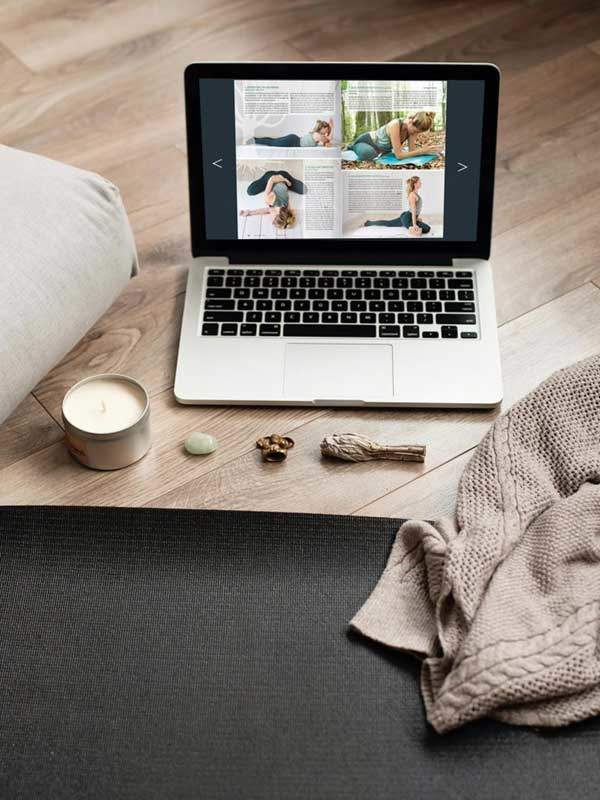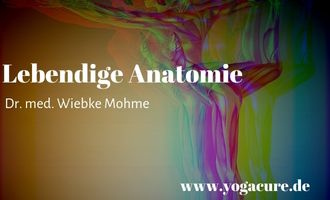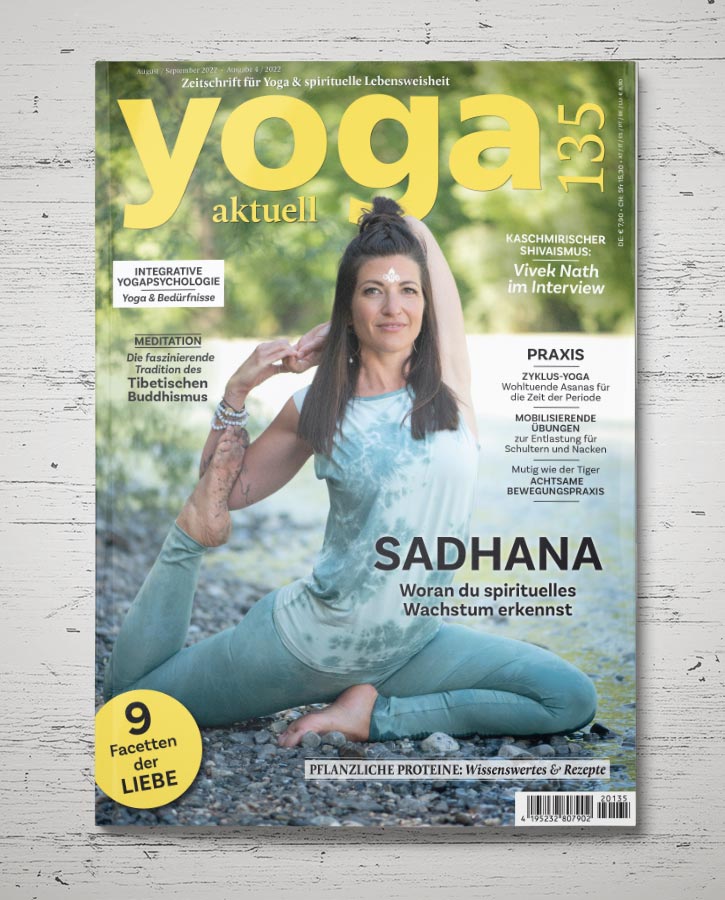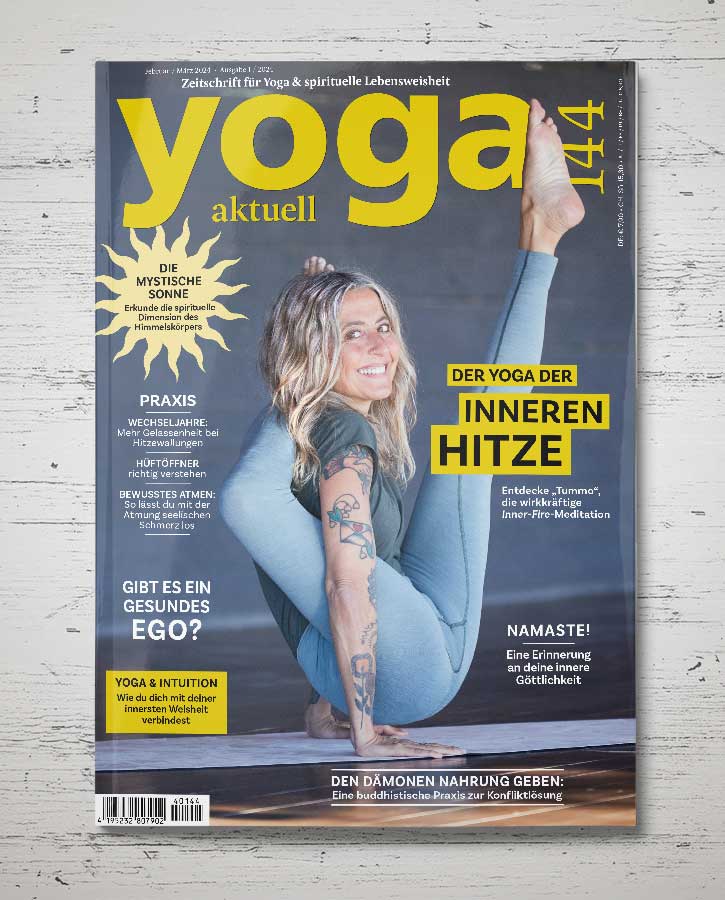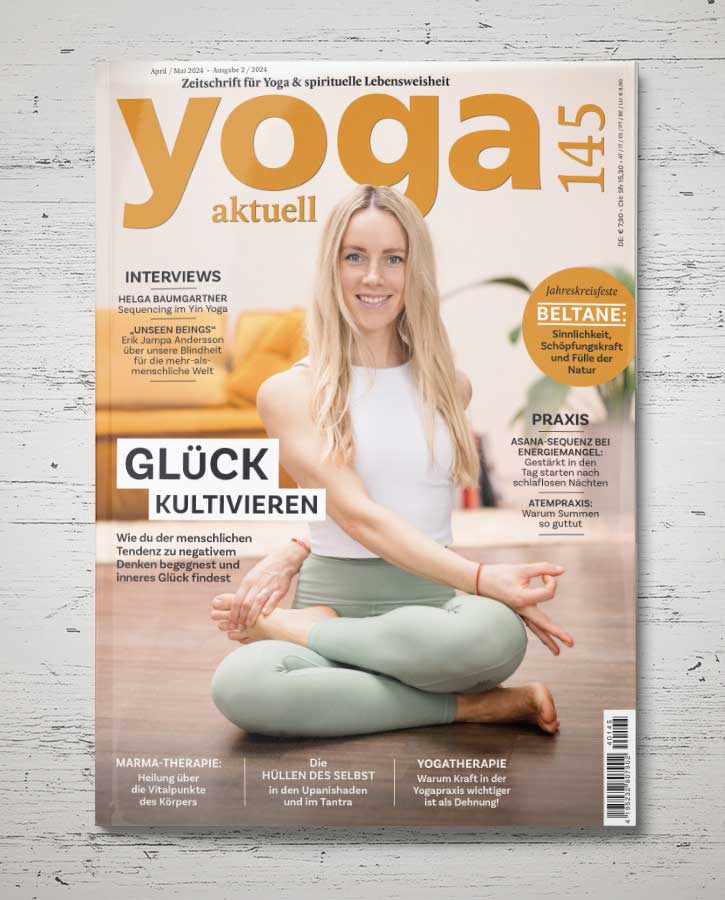Sarah Powers is said to be one of the “founding parents” of the Yin Yoga we know today along with Paul Grilley. She came to yoga in her early twenties from studying psychology and she has been a Buddhist for over 30 years. Being interested in holistic views of reality and our psycho-physical-somatic intricacies, she uses the body as a jump-off point for exploration.
We spoke with her about Daoist Yoga, which mainly influenced the modern-day Yin Yoga, and the multi-layered qualities of experience happening in a yin yoga shape. Finding physical stillness in yin postures can create sensations in the body which help us experience the immediacy of nowness in a mindful way – which so many of us are yearning for.
INTERVIEW
YOGA AKTUELL: The Yin Yoga we practice these days evolved from what was known as Daoist yoga, right? When you first practiced it with Paul Grilley back in the day, what exactly fascinated you?

Sarah Powers: Originally, Paul and I were teaching at the same yoga studio in Los Angeles. And I would do my Ashtanga from 7:00 to 9:00 AM and then either I had another class to teach, or I would sneak into Paul’s class. I was already juiced from two hours of practice and here was such an unusual invitation to hold floor poses for long periods of time.
There wasn’t any description of its benefits or the multi-layered qualities of experience that I was having. Because it’s certainly not just a physical experience to be still. I wasn’t a meditator yet, so it was challenging in that way. But Paul was so humorous and delightful that I enjoyed the space. Eventually we both moved away from Los Angeles and for me the practice fell away.
Ten years later, I was living in Northern California and Paul was in town. By then I was a meditator already, but I found long periods of meditation as hard as somebody who has never done yoga. This time when Paul put us in these postures, my mind was much more able to stay clear and curious. And I could sense that some kind of meditation seat was cultivating inside of me. That was my initial motivation and then it just grew from there.
What is the difference between Daoist Yoga and Yin Yoga according to you?
With Daoist Yoga you’re referring to Paulie Zink, I guess? I didn’t study with him, I only practiced with him once. I remember I was impressed by his amazing physical prowess, such a very flexible person. Paulie was calling it Daoist Yoga and initially I think Paul was also.
There were times in class where it was more animal-like active poses and then there were times when it was more meditative, contemplative and on the floor. The latter they would call the yin time, the other part the yang time.
As an Ashtangi, I felt that I didn’t really need the yang piece they were sharing, but the yin piece really intrigued me. I incorporated these yin aspects into my teachings and started to extract the yin word. Paul and I unconsciously started to use the term ‘yin’ delineating it from other styles of yoga.
In the yoga world we don’t own the idea of yin yoga. But using the term, we’re letting people know that coming to this class, you’re going to move a lot less, like a scary amount of less. (chuckles) So it was just a qualifier, more than the idea to start a new style.
You and Paul Grilley are said to be the “founding parents” of yin yoga. While Paul was the one who brought in the floor held poses for longer periods of time, you were the one that sprinkled in the mindfulness aspects. Why do you think Yin Yoga and mindfulness are such a perfect match?
I was coming to Yin Yoga back in the day as a Buddhist practitioner. As I mentioned before: it helps tremendously to widen the capacity to be more able to look into your aversion to stillness. Movement can be such a distraction.
To have a physical practice that’s in a way a preliminary possibility of juicing your connective tissues in your joints enough to stay still with less fidgeting and then at the same time discover: is it my body that’s really saying I can’t stand this another moment or is it the habits of my mind that are just impatient? And then explore where the suffering really is.
Buddhism loves to invite us to explore our suffering to discover that it’s not as stable, independent and permanent as it seems. Yin Yoga seemed like an opportunity to give people a meditation seat, so to speak, but you call it an asana. As long as it is helping the body, people are willing to stay if you couch it in a way that shows that they’ll benefit physically and energetically.
And that was me! This energetic, physical practice has a way of settling the body-mind-stream, so that meditation actually becomes more viable. I don’t have to wait on being an advanced practitioner.
And mindfulness was the piece of Buddhism that got invited into popularity because it didn’t expect us to be anyone but who we are with all of our current disturbances and gifts. We’re not looking for samadhi, we’re not looking for bliss, we’re looking for how can I be more conscious in this current state I’m in and then enhance my capacity to welcome all states.
Meditation with mindfulness is not state specific. And if I’m holding a yoga pose for 5 minutes, it’s like a little mini meditation. And if I’ve done that in this pose, that one and another one, then suddenly I’ve been meditating for 20 minutes. And I think that’s why it started to be a natural braiding together.
I feel I love yin yoga because it brings me back into my body. The sensations anchor me in my body and I’m more aware of the present moment. Instead of listening to my mind where usually there is a lot of chatter going on, I’m listening to my body’s chatter, the physical sensations, which keep me focused. The body helps me to stay in the body.
So true! And what you’ve just pointed out is the first foundation of mindfulness: mindfulness of the body. There’s four of them: the first foundation is to explore your body, the second is to explore the feeling tones, the third is mind states and the fourth is a number of things but we often call it the environment, particularly using the gateway of hearing.
Yoga practitioners might not know that Buddhists call themselves yogis, too. And according to the first foundation, they are pointed to explore everything through sensation because that’s really where you have some capacity to be with the immediacy of nowness. Whereas if you’re listening to your chatter, it’s often either commentary about the present moment which is fixated by our history which is why it has so much to do with pasting or we’re planning and so we’re futuring. And to wake up into the quality of feeling fully alive, we need presence, and the body is a great anchor for that.
So the Buddhists call themselves yogis, then there’s the Indian yogis and also the Daoist yogis – what do all the ‘different’ yogis have in common?
Curiosity. (both chuckling)
What would you like other people to know about yin yoga?
That your body is a gateway to inhabiting yourself with more ease, friendship and a sense of natural kindness. Instead of going out where you could be, yin yoga invites you to come in to where you actually are and allow that to be the journey itself, moment to moment. It’s a non-managing or manipulating or controlling practice. And those features of our personality then start to naturally soften and that’s beautiful for all different types of people.
It’s lovely that yin yoga is such a personal yoga practice which helps us draw our attention inward and finding our own individual shape supported by props. At the same time, Yin Yoga promotes meridian health. Which is why I’m curious: If I’m inclined to or craving certain poses, does my system ‘know’ that it is good for my own health?
This adage can be so true: “A body out of balance, will seek opportunities to stay out of balance. A body in balance, seeks continuity of balance.” So, the question you just asked: Can we trust the somatic intelligence to create a personalized sequence based on what our system would need? I guess, it depends on where the state of consciousness of the practitioner is at. In a person who is more naturally inclined to be curious and to not impose their expectations and their cravings for perfection, sure!
But in general, we would need to learn more about meridian health through training and then apply it by asking ourselves each day what is going on within me.
Also, meridian health is not just physical, it’s about where the energy is coalescing, where it might be deficient or where it might be in excess. And to tune in that way takes some sensitivity and time.
You just brought up the term ‘energy’ – how would you describe ‘energy’ or ‘chi’ in your own words?
Borrowing from my study in Chinese medicine, it is really the vital animating dimension of experience that fills our bones, tissues and skin. It is inseparable from our aliveness. There is an energetic double in everything, even in rocks.
There are multiple kinds of beings and then there’s the material universe, but all of that is defined and confined by the fact that chi exists in this unseen dimension.
Doctor Hiroshi Motoyama, who Paul introduced me to, was an inventor, an amazing Yogi, a Chinese medical doctor and a seer and according to him (and others) energy is the dimension of what’s behind electricity. If we were to say that electricity is invisible and we discovered it not that long ago in the history of humankind, was it always there and we happened to find it, or did it develop as consciousness evolved? And if we were really interested in those unseen dimensions – that’s why I said all these perspectives have the common denominator of curiosity –, wouldn’t we want to know what’s behind electricity?
Energy is this all-encompassing term for the heartbeat of the universe, and I’m interested in that so much. It’s so revitalizing to know that even if I’m dull, sick, tired and cranky that energy does not stop vibrating – even when everything looks like it’s at a standstill, we are that vibrancy.
So true. Thank you for your time, Sarah.
|
Sarah Powers and her husband Ty host silence retreats Sarah Powers and her husband Ty lead several silent retreats annually; one silent retreat takes place in northern Italy from November 2 to 8, 2024, and another one in southwestern France from June 2 to 7, 2025. Their Level 3 of the Insight Yoga training starts in December, it is suitable for those who already have done trainings in Yin Yoga and have a Dharma practice. Her books Lit From Within and Insight Yoga have been published in German by Arbor Verlag. |



